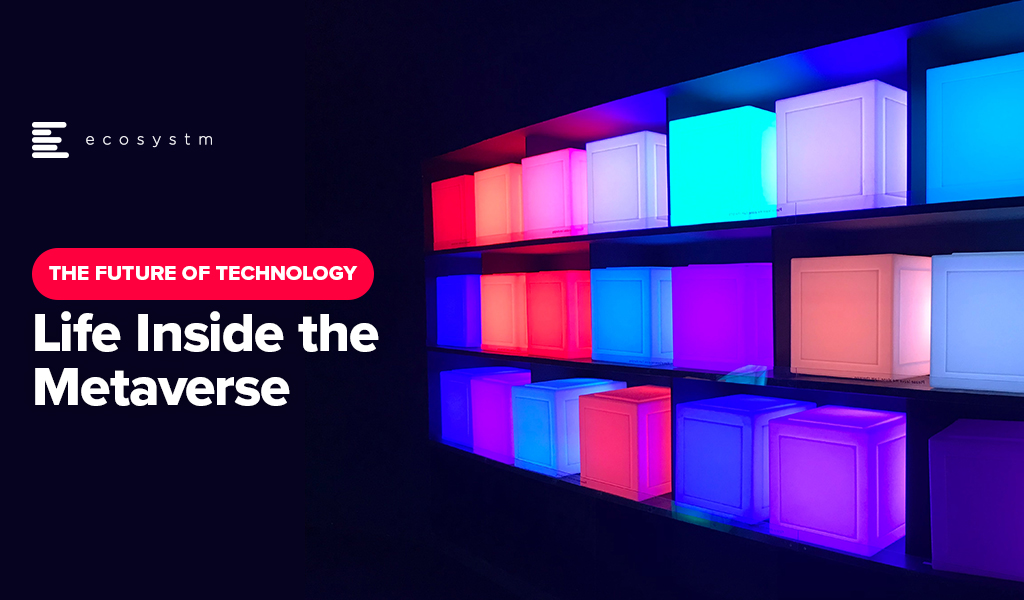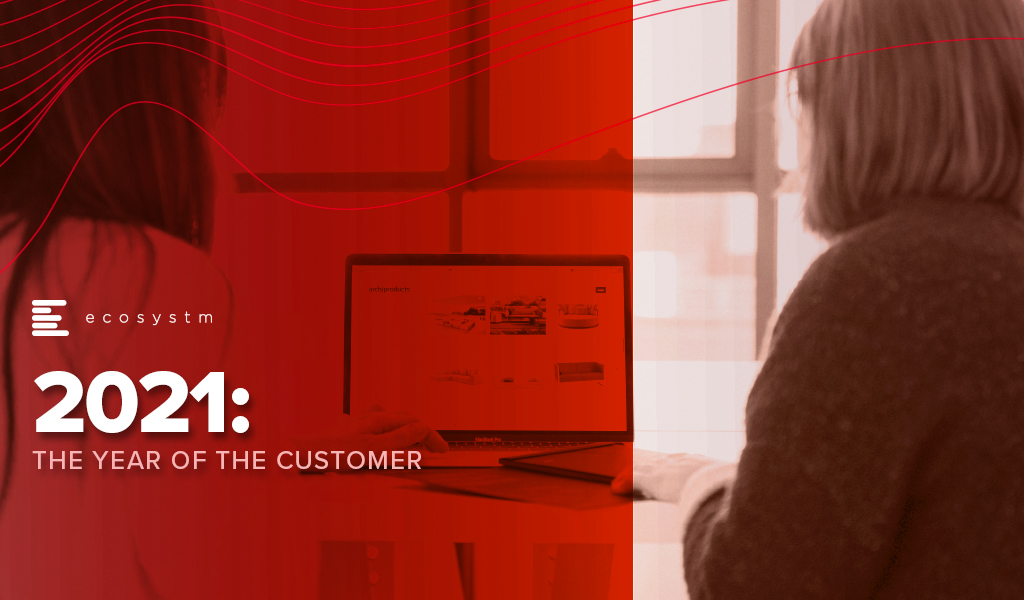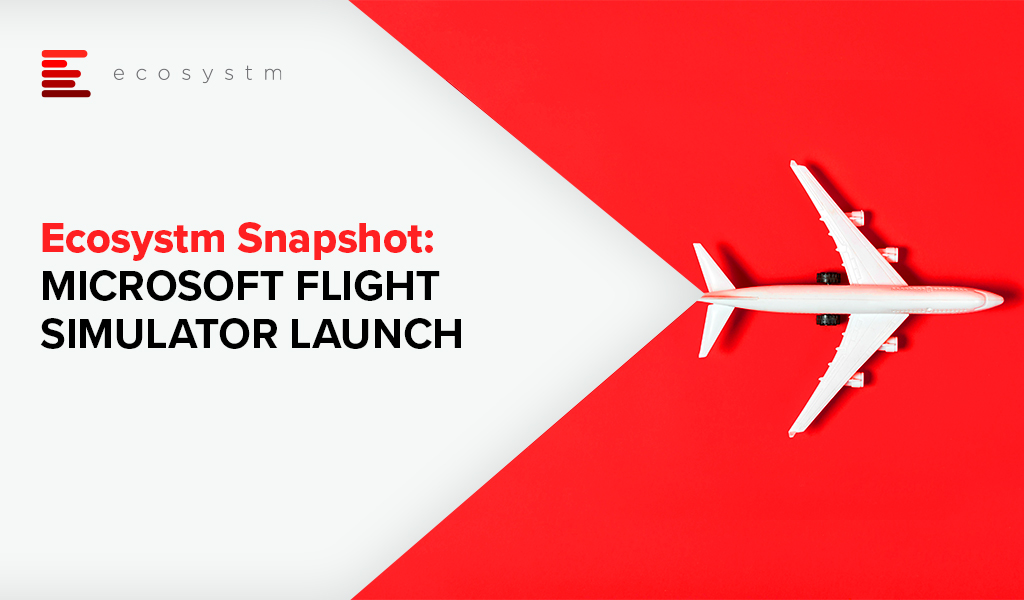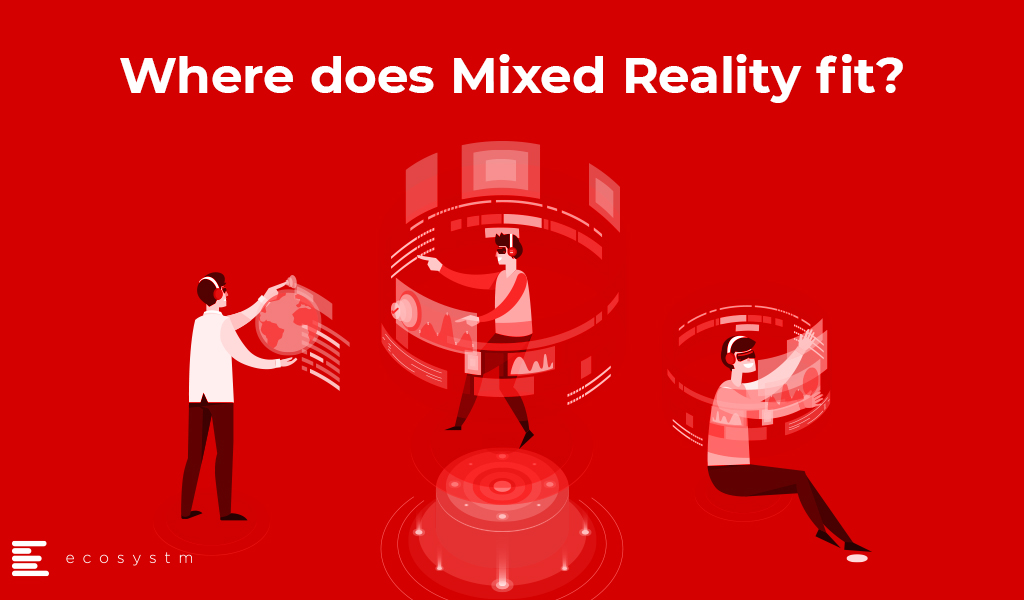While the concept of the Metaverse can be complex and confusing, it is not hard to imagine the benefits it will bring to an enterprise. In Applying the Metaverse to the Enterprise, I talked about how a Metaverse is nothing more than real life in digital form. Let us now look at what life inside a Metaverse will look like.
The 4 Key Capabilities of the Metaverse
A Metaverse will allow for individual validation within a corporate environment through the association of four key capabilities:
Digital Built Environment. The digital built environment is the representation of the physical surroundings that provide the setting for human activity. A Metaverse provides a powerful, online, 3-D and 4-D representation of the physical workplace.
Interaction. Inhabitants of a Metaverse are known as avatars or residents. They can be representatives of staff or customers; and personalise an individuals’ interaction with the information being sought.
Navigation. Natural search occurs when the capability exists to spatially move an avatar through a digital environment. Today, the power of spatial search is self-evident and highlighted through applications such as Google Maps.
Collaboration. Social and information networks are created when two or more parties can openly and freely exchange information. They are also the basis of contemporary, decentralised digital economics (e.g., blockchain). Organisations are increasingly moving to incorporate emerging social technologies into traditional collaboration environments for decades.
The choice of a Metaverse would seem obvious for large organisations looking to move away from a process view of information. Building or construction analogies are already used to deal with the abstraction of information within their complex physical environments. It is, for example, a key principle of enterprise architecture. As a result, the decision to utilise a metaverse as a channel is ultimately not a big call.
The Metaverse will Require a Paradigm Shift
As a presentation layer, a Metaverse makes navigation and discovery easier and more intuitive. Adopting this new approach would allow a completely social and familiar way to interact with information. It would provide organisational benefits beyond the current capabilities of traditional data and process-driven environments and become the catalyst for major differences in the treatment of enterprise information. The interactive context of a Metaverse will also require differences in the way information is expressed.
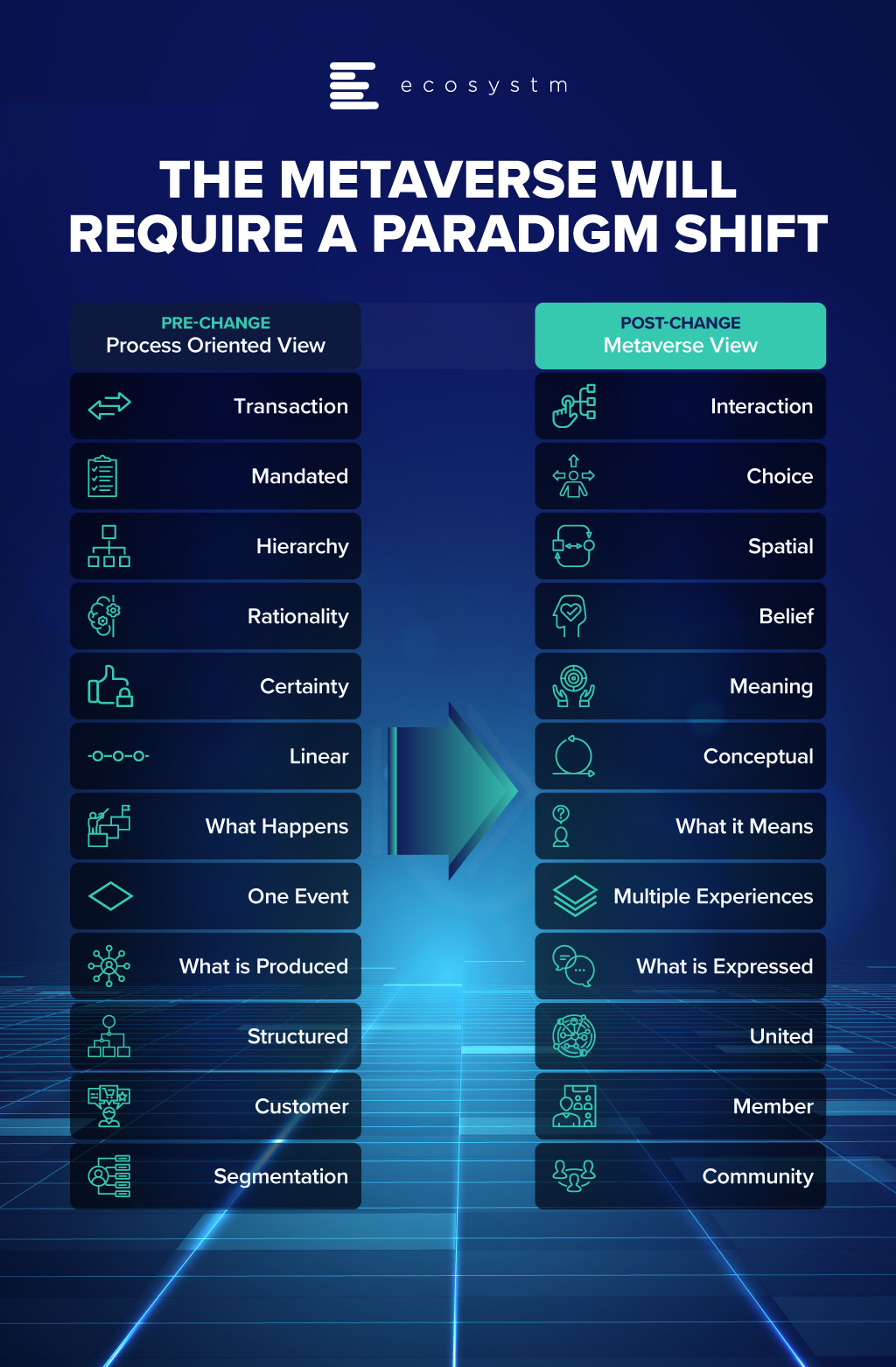
Although the tech industry is strewn with concepts of “exchange” and “collaboration”, such terms are really actions that occur after an audience has engaged with the content. The Metaverse approach potentially addresses this challenge by first getting users comfortable with their environment before encouraging them to interact in it with others. Using these differences as key drivers, the creation of a Metaverse can focus on delivering a platform for personalised information discovery, specific to the responsibilities and opportunities for individuals within an organisation or broader ecosystem.
This is just one example of the Metaverse and enterprise. There are many others. For example, think about fully integrated asset management platforms used by retail property groups or airport corporations. The Metaverse will now allow these organisations to commercialise their full physical retail assets in a digital metaverse by offering tenants both a physical store and a digital store. Or even offer the digital space to a whole new portfolio of different tenants. The commercial upside of such models is significant and sure to drive investment.
Overcoming the challenges of introducing a new information delivery channel seems like a difficult transformation choice today. Ultimately, this is the transition choice of Web 3.0. It is one that acknowledges that existing process-oriented channels will fail to meet the primary drivers and demands underpinning the growth of the new Web 3.0 world: individualism, personalisation, and decentralisation.
Yes, virtual reality environments are a super-appealing channel because of their immediate visual gratification, but behind that façade, the monetisation of physical, commercial data and the continual rise of infonomics is what it is all about.

In 2009 one of the foremost Financial Services industry experts was giving my team a deep dive into the Global Financial Crisis (GFS) and its ramifications. According to him, one of the key reasons why it happened was that most people in key positions in both industry and government had probably never seen a full downturn in their careers. There was a bit of a hiccup during the dot com bust but nothing that seriously interrupted the long boom that began somewhere in 1988. They had never experienced anything quite like 2008; so they never imagined that such a crisis could actually happen.
Similarly, 2020 was an unprecedented year – in our lives and certainly for the tech industry. The GFC (as the name suggests) was a financial crisis. A lot of people lost their jobs, but after the bailouts things went largely back to normal. COVID-19 is something different altogether – the impact will be felt for years and we don’t yet know the full implications of the crisis.
While we would like to start 2021 with a clean slate and never talk about the pandemic again, the reality is that COVID-19 will shape what we will see this year. In the first place it looks like the disease will still be around for a substantial part of the year. Secondly, all the changes it has brought in 2020 with entire workforces suddenly moving to operating from home will have profound implications for technology and customer experience this year.
As we ease into 2021, I look at some of the organisational and technology trends that are likely to impact customer experience (CX) in 2021.
#1 All Business is Now eBusiness
COVID-19 has ensured that the few businesses which did not have an online presence became acutely aware that they needed one. It created a need for many businesses to quickly initiate eCommerce. Forbes reported a 77% increase in eCommerce infrastructure spending YoY. This represents about 4 years of growth squeezed into the first 6 months of 2020!
From a CX point of view there is going to be far more interaction with brands and products through online channels. This is not just about eCommerce and buying from a portal. It is also about using tools like Instagram, Facebook and other social media platforms more widely. It is about learning to interact with the customer in multiple ways and touching their journeys at multiple points, all virtually using the web – mostly the mobile web.
Ecosystm research shows that almost three out of four companies have decided on accelerating or modifying the digitalisation they were undergoing (Figure 1). It is fair to expect that this gives a further boost to moving to the cloud. For the customer it will mean being able to access information in many new ways and connect with products, services, brands at multiple points on the web.
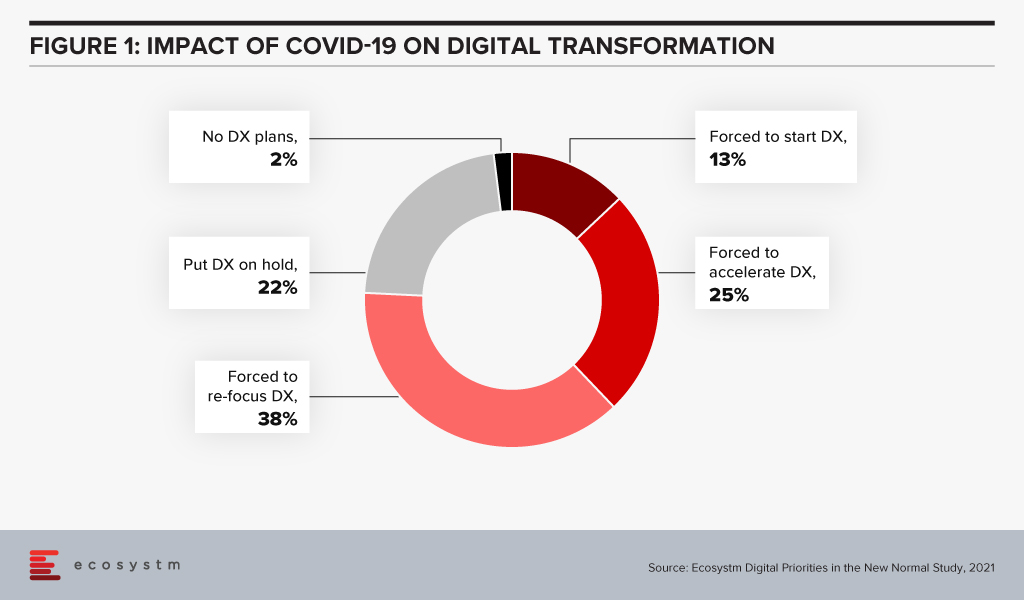
Since interacting with the customer at multiple points is new for most services, I foresee a lot of missed opportunities as companies learn to navigate a completely different landscape. Customers pampered by digitally native organisations often react harshly to even a small mistake. It will become critical for companies to not just become a bigger presence online but also to manage their customers well.
New solutions such as Customer Data Platforms (CDP), as opposed to CRM will become common. Players who are into Customer Experience management are likely to see huge business growth and new players will rapidly enter this space. They will promise to affordably manage CX across the globe, leveraging the cloud.
#2 Virtual Merges with Real
Virtual and Augmented Reality are not new. They have been around for a while. This will now cross the early adoption stage and is likely to proliferate in terms of use cases and importance.
AR/VR has so far been seen mainly in games where one wears an unwieldy – though ever-improving – headset to transport oneself into a 3D virtual world. Or in certain industrial applications e.g., using a mobile device to look at some machinery; the device captures what the eye can see while providing graphical overlays with information. In 2021 I expect to see almost all industrial applications adopting some form of this technology. This will have an impact on how products are serviced and repaired.
For the mainstream, 2020 was the year of videoconferencing – as iconic as the shift to virtual meetings has been, there is much more to come. Meetings, conferences, events, classrooms have all gone virtual. Video interaction with multiple people and sharing information via shared applications is commonplace. Virtual backgrounds which hide where you are actually speaking from are also widely used and getting more creative by the day.
Imagine then a future where you get on one of these calls wearing a headset and are transported into a room where your colleagues who are joining the call also are. You see them as full 3D people, you see the furniture, and the room decor. You speak and everyone sees your 3D avatar speak, gesture (as you gesture from the comfort of your home office) and move around. It will seem like you are really in the conference room together! If this feels futuristic or unreal try this or look at how the virtual office can look in the very near future.
While the solutions may not look very sophisticated, they will rapidly improve. AR/VR will start to really make its presence felt in the lives of consumers. From being able to virtually “try” on clothes from a boutique to product launches going virtual, these technologies will deeply impact customer experience in 2021 and beyond
In the immortal words of Captain Kirk, we will be going where no man has gone before – enabled by AR / VR.
#3 Digital CX will involve Multiple Technologies
AI, IoT and 5G will continue to support wider CX initiatives.
The advances that I have mentioned will gain impetus from 5G networking, which will enable unprecedented bandwidth availability. To deliver an AR experience over the cloud, riding on a 5G network, will literally be a game changer compared to the capabilities of older networks.
Similarly, IoT will lead to massive changes in terms of product availability, customisation and so on. 5G-enabled IoT will allow a lot more data to be carried a lot faster; and more processing at the edge. IoT will have some initial use cases in Retail, Services and other non-manufacturing sectors – but perhaps not as strongly as some commentators seem to indicate.
AI continues to drive change. While AI may not transform CX in 2021, this is a technology which will be a component of most other CX offerings, and so will impact customer experience in the next few years. In fact, thinking of businesses in 2025 I cannot believe that there will be a single business to customer (B2C) interaction which will not feature some form of AI technology.
I’d be interested to hear your thoughts on the technologies which will impact CX in 2021 – Connect with me on the Ecosystm platform.

Last year Microsoft announced it was developing a new version of Flight Simulator which caught many of us by surprise. Flight Simulator? Really? The last launch of a new version of the game was in 2006 – 14 years ago, now!! How does something come back after all these years?
Now that it has launched about a week ago, the initial feedback has been extremely positive and it appears that Microsoft has a winner here. An analysis even claims that it will spur $2.6 billion in hardware sales of PCs, game accessories and the like!
I wanted to unpeel the onion a bit to take a closer look at what is going on and discovered a world of interesting developments around this product.
My first thoughts on hearing the announcement was that Microsoft, who has been steadily losing the battle of consoles to Sony’s PlayStation platform, was reviving this old favourite to resuscitate its drooping share.
Not a bad move. Flight Simulator has a core of die-hard fans – it even boasts of professional pilots who play the game as relaxation. It has a long history and a captive fan community. But it is old. That loyal community is not part of the demographic that a gaming company would normally look at today.
The other interesting aspect to consider is the COVID-19 situation this year. Obviously, Microsoft did not know this at the time they embarked on this project but the pandemic has turned everything on its head – hardware sales are through the roof – including accessories, at a time when people have been homebound and looking for entertainment within the four walls of one’s abode. The Ecosystm Digital Priorities in the New Normal study finds that 76% of organisations increased their hardware investments when the crisis hit – and 67% of organisations expect their hardware spending to go up in 2020-21. And that is only on the enterprise side of things. On the consumer side, at this point joysticks are in short supply – a trend that seems to have been accelerated by the Microsoft launch last week, interestingly – and so are PCs. The PC vendors are all enjoying a bumper year of growth. This is an ideal time to launch a really cool new version of the game.
Microsoft’s Bigger Game
The reality however is that while Flight Simulator will add to the revenue and also give Xbox One a fillip, Microsoft is probably after a much bigger “game” (excuse the pun!). The company has called its ‘Xbox Game Pass’ the Netflix of the gaming market. With multiple cloud-based gaming platforms having been launched – many with subscription services – the battle is on to decide the winners in a relatively new space. To this end, Microsoft has announced an intention to make Game Pass available across different devices – XBox console, PCs, tablets, phones. Having a title like Flight Simulator available through Game Pass, will act as a key hook to get customers to sign up for the subscription.
The new Flight Simulator version has been developed using AI and real-world imagery brought in with data from Bing Maps. With the newly added realistic scenery, it also seems like a great fit for use with the HoloLens Virtual Reality headsets. In one shot Microsoft is showcasing their lead in areas of technology which are likely to prove attractive to developers in a big way. I believe that this is a way for them to entice more developers on to Azure and to Microsoft cloud to develop their games – “AI SDKs anyone? Virtual Reality tools anyone?”
What seems at first glance like the launch of a new “future is here” version of a great game will turn out to be a possible big swing at multiple targets by Microsoft – at leadership in gaming with Game Pass; at reviving Xbox fortunes; at leadership in game development platforms, with Azure packing AI services, Bing Maps, AR/VR tools, among other technologies to move more development on to the Microsoft cloud. In the process Microsoft launched a highly enjoyable game and got closer to their ultimate aim to indeed become the Netflix of gaming.
Great move Microsoft! Tip: This could also give them a foothold in the virtual travel and virtual vacations market! That would be a hot seller in these times.
We’ve been hearing about Augmented Reality and Virtual Reality for a while now. The future of the virtual world is being built today and as AR/ VR become more mainstream and prices decrease, there’s a new technology trying to fit in somewhere, to perform its magic – Mixed Reality.
What is Mixed Reality, however? Is it just another marketing jargon for the same technology wrapped in new covers?
Before diving deep into mixed reality , let us revisit the fundamentals of the virtual world technologies.
Virtual Reality
Virtual Reality replaces your world with a digital world and has been in the market from some time. VR is achieved through the use of a virtual headset which in combination with an image/video (either through phone or direct source connection) produces multi-projected environments with lenses to generate a virtual environment. It provides real-world experience and some of the use cases include driving and flight simulators, virtual tours, 360° videos, and in healthcare, training and more. There are a variety of VR devices available today from known manufacturers such as Facebook ‘s Oculus, Samsung Gear, Google Cardboard, Sony’s PlayStation VR, HTC Vive and others, offering different features, and addressing different requirements and comfort.
Augmented Reality
Augmented Reality is a direct or indirect view of physical world elements augmented through the digital environment. Basically, AR supplements the real world with digital objects of any sort. It is already being used in the Aviation industry, where data is displayed within the pilots’ helmet view as they fly.
An example of AR is Ikea’s mobile app developed specifically to showcase its furniture catalogue – A piece of furniture such as a dining table or a television cabinet can be virtually displayed as a digital image overlaid on top of the real image of your home space. This lets you easily judge the appearance or gauge how it will fit in your home space.
Some of the more well-know AR devices include Google Glass, Microsoft HoloLens, and Sony Leap. AR is also used in mobile gaming applications such as Pokemon GO, where virtual creatures are placed into the real world.
Where does Mixed Reality fit?
As an independent notion, Mixed Reality combines the best of both worlds and covers all the possible disparities of the physical and the simulated worlds.
Also known as hybrid reality, Mixed Reality covers the spectrum where physical and digital objects co-exist and interact in real time. Somewhere, between AR and VR, there is an overlap between the physical and the virtual worlds – that is where Mixed Reality comes in.
Both AR and VR require users to step out of their own reality – or to use another device (typically a smartphone) to access digital or “virtual” content. The experience is either all-encompassing (with VR – where the content overrides your current reality), or underwhelming (with AR – where the content is limited, does not understand your current reality and/or is at arm’s length on a relatively small screen).

Mixed Reality is designed to add digital assets to your current environment. It adds to the current environment in a natural way that gives the user benefits that non-users would not have.
For businesses, Mixed Reality can offer the most benefit and potentially offer limitless opportunities. Defining the polar ends of AR and VR spectrum Microsoft introduced Hololens in late 2016 as a groundbreaking device and showcased capabilities blending the real and virtual world. Despite being a promising product, there have been hiccups such as a limited field of view (FOV) restricted to only 30°, scaling and sizing holograms and others.
Learning from the failures, Microsoft recently released a new version of its Mixed Reality device – the Hololens2. Microsoft’s Hololens2 takes Mixed Reality beyond niche use cases using more natural gestures, a larger FOV and a multi-user environment – powered by Azure Mixed Reality services.
Mixed Reality in the Enterprise
The use cases of Mixed Reality are many and as the continuum builds, the testing, adoption and deployment cases will become wider. Microsoft’s device is not aimed for the consumer market and is primarily targeted towards business use cases.
Tim Sheedy, Principal Advisor, Ecosystm, believes, “Most of the short and medium-term use cases are really suited to businesses. There are definitely some longer-term opportunities for consumers, but that will require substantial miniaturisation of the hardware and change of form factor. Current MR systems won’t become mainstream devices in the consumer market.”
With Mixed Reality in the play, organisations will be able to explore newer ways of doing things:
Training. Training is a perfect use case. If you can imagine taking a typical guided software where tips pop up on a screen (such as “click this button to personalise your experience, click here to see current leads, click here to add an opportunity) and move this training to the real world (this lever shuts down the machine, this valve reduces pressure etc) then you can get an idea of what is possible.
Engineering. This applies to any job that requires engineers or repairers to work on equipment, where they can be guided through a fix. Any sensor that sends information back to a computer can now be visualised – a mechanic may look at a car and see green for all the components operating within standard range and red for those that need attention or repair.
Construction. A construction worker or site manager can see the entire building or components of the building in advance and make plans for the location of materials, staff, safety etc.
Graphics Designing. A designer can picture how a new product might look in an environment and can design the product with respect to the actual surroundings.
Healthcare. A surgeon could have a CT or MRI scan overlaid onto the patient as they operate to ensure they are targeting the right area.
Anywhere that digital assets or information can assist a worker or drive a more effective, faster or safer outcome are all potential use cases for Mixed Reality services.
A Look at the Field
The theory behind Mixed Reality is that it adds to the user experience in a natural way. Organisations are exploring opportunities to leverage these technologies in the real world. Despite numerous use cases and de facto descriptors, the technology cannot be manifested until it comes to real use.
“Mixed Reality will be a success when it is seamless to use for the first line workers – when it doesn’t feel like a computer you wear on your head!” says Sheedy. “You should be able to interact with these assets in a standard way – and this is where Hololens2 is a big step above the first iteration – as it will allow more natural interactions with the digital objects – you push something or turn something and it moves, versus the “finger click” approach of the first version.”
Imagine your first day at work at a new employer, and instead of a person showing up to give you the tour, you put on a Mixed Reality device (standard or industrialised for those in mining, construction etc) and you are given a tour with virtual overlay and audio guidance.
Sheedy believes that “Mixed Reality may never be a mainstream technology – well not in our generation at least. But that doesn’t mean it won’t be a commercial success. If it is easy to deploy, manage, use, and code for and makes financial sense for businesses to deploy them then these devices will be used. The previous Hololens had commercial users – but Hololens2 should see more success as it is a better solution that can help businesses overcome even more challenges.”
The longer-term success of Mixed Reality will be how well it works with existing software platforms out-of-the-box. Support by SAP, Oracle, Salesforce, IBM and others will help to drive adoption.
How is it going to evolve in the future?
At present, the mobile device is the interface of choice for consumers and workers. But voice is quickly taking off (e.g. Google Home ). Mixed Reality adds an extra impetus to devices that are looking to supplant the smartphone as the interface to information, entertainment and data.
The longer-term future will likely see the emergence of standards that deliver the right information at the right time on the device of choice – whether that device be one with a screen, a microphone and a speaker (smart speaker like the Amazon Alexa), a screen and a speaker (such as a Hololens device), a smartwatch or another form factor.
“Mixed Reality devices will get smaller, smarter, faster, have better resolution, be more integrated (with cloud services and software platforms) and more integrated with another non-screen interface” says Sheedy.
“Access to the right information at the right time on the best device that drives the right outcomes will be the ultimate goal – and Mixed Reality will be one of the form factors that help consumers and businesses achieve that goal.”
It’s still too early to tell the direction this technology will take but the promises surely appear to be overwhelming. What do you think will be the future of Mixed Reality – is it another gimmick or will it really live up to its promise?
Let us know in your comments below.


